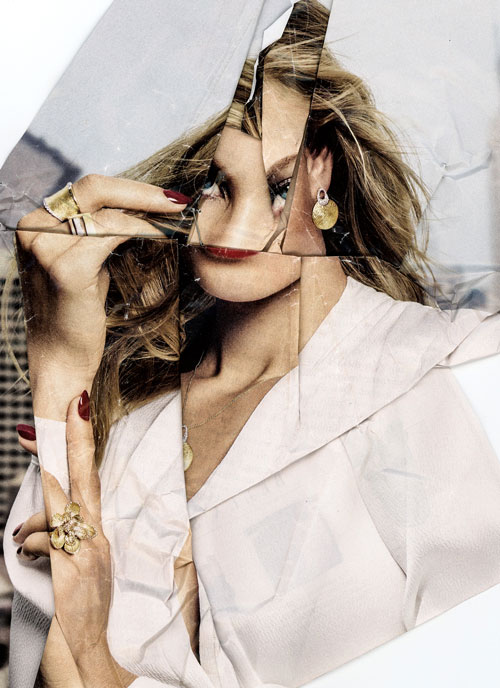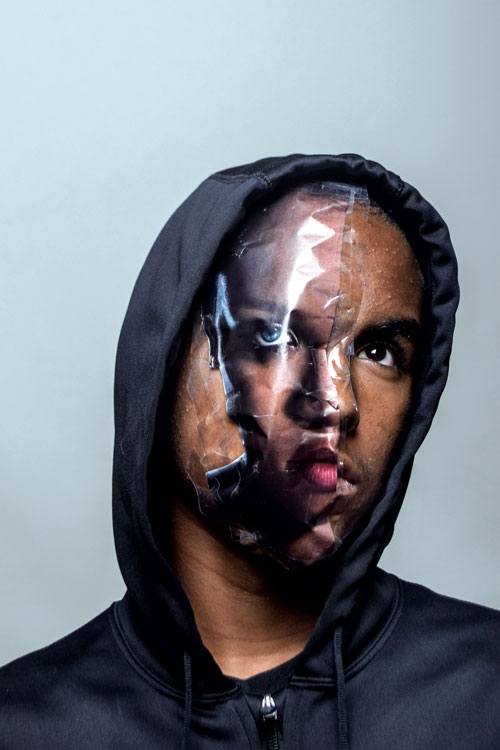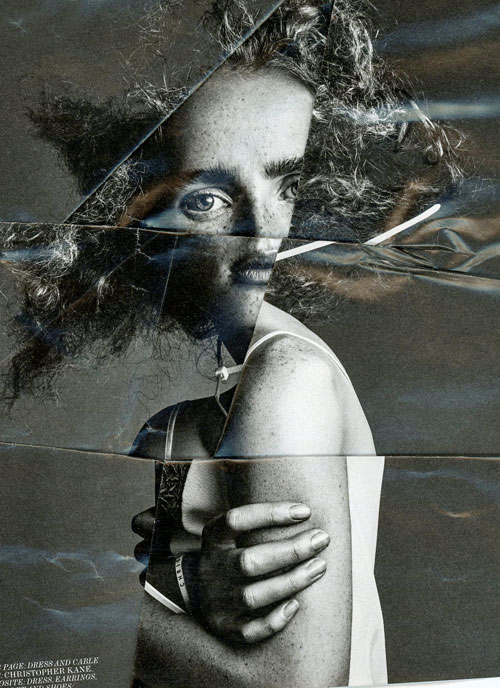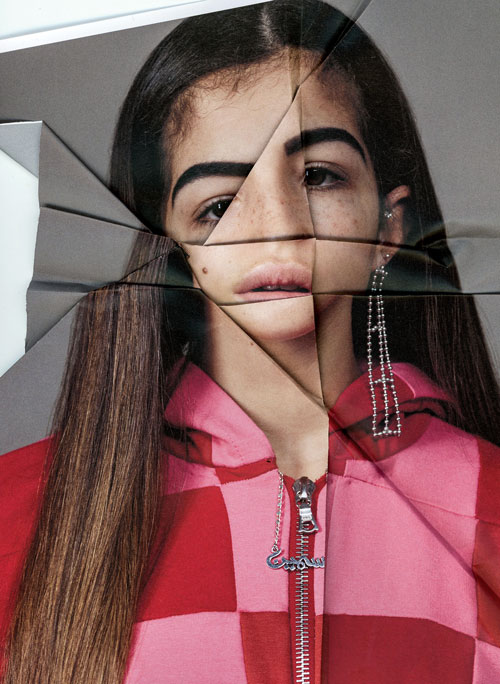 |
 |
 |
| Top: Caitlyn C., altered ego portrait. Middle: Kanoa Y., distorted portrait. Bottom: Violet, altered ego portrait. |
I learned it was a distorted representation of reality that creates a sense of longing in the consumer. In this lesson, students use images from editorial fashion and celebrity photography to create their own distorted representations of this world.
Introduction
Begin by sharing with your students the work of Robert Heinecken, Stephen J. Shanabrook, and Erin Case. These artists all create assemblages and photographs using found images torn from magazine pages. Shanabrook in particular distorts, folds, and flattens pages before photographing them.
Warm-up Exercise
For this first exercise, students need found images from glossy magazines or their own photographs, access to a flatbed scanner, and their hands. Have them each take an image or page and squash, crumple, fold, and twist it. As they do this, ask them to consider how the final image will make a new, distorted image when flattened out.
Each scrunch, fold, or tear has a purpose, and it is important for your students to understand they are destroying the image to distort it. Once flattened out, the images can be compressed and copied on a flatbed scanner. If you don’t have access to a scanner, place a piece of glass over the work and photograph it.
This exercise is perfect as a ten- to fifteen-minute starter activity and, from my experience, students respond really well to it. It’s an exciting way to engage them, and it provides them with a contextual concept and refreshing ideas for the main part of the lesson, where they will perform “paper surgery” on each other with transparent tape, pieces of fashion imagery, and studio lighting.
The Studio Portrait: Altered Ego
Students each construct a photographic “altered ego” using studio lighting, found imagery from fashion and celebrity magazines, and each other as models. When collecting print materials, ask them to look for a variety of ethnicities, genders, and ages. Students should only use glossy magazine images—no computer printouts allowed.
 |
 |
 |
| Top: Santiago S., distorted portrait. Middle: Abe K., altered ego portrait. Bottom: Turman G., distorted portrait. |
Discuss with students how magazines, movies, and television create and impose ideas that become social references (that dictate) what you must look like, how you must do your makeup, what clothes you should wear, how you should behave, and so on. Then share the following criteria for students’ photo shoots:
- All images must be shot vertically (like a school portrait).
- Don’t cover both eyes and mouth; have one of these visible in the photo. Use transparent tape to place the photos on your partner’s face, adding texture in the final image.
- No full body shots, only head and shoulders.
- Photograph details of the face to show the difference between textures (e.g., tape, skin, and cloth). This will require you to get close to your model while shooting.
- For lighting, use just one strobe with a soft box. Have a partner help you move the strobe to different angles and sides as you shoot.
- Shoot and edit the photographs in RAW.
Distorting Reality
This project challenges students by making visible that which is not readily apparent, playing with photography’s traditions, and manipulating reality, identity, and meaning.
Joe Medina is a visual arts teacher at Harvard- Westlake in Studio City, California. jmedina@hw.com
NATIONAL STANDARD
Creating: Generate and conceptualize artistic ideas and work.
RESOURCES
Robert Heinecken: bit.ly/artsyroberth
Erin Case: erincase.weebly.com
View this article in the digital edition.







